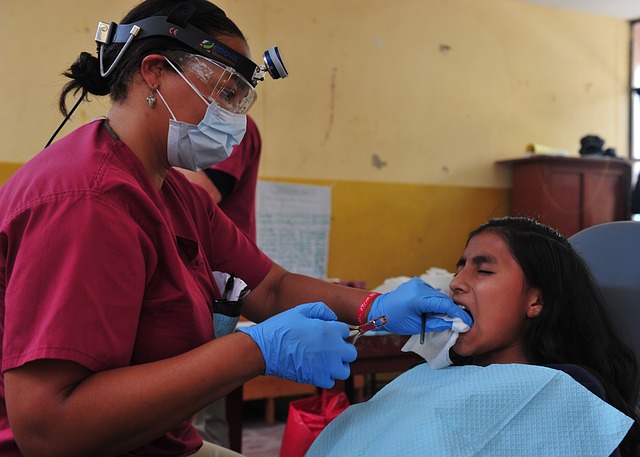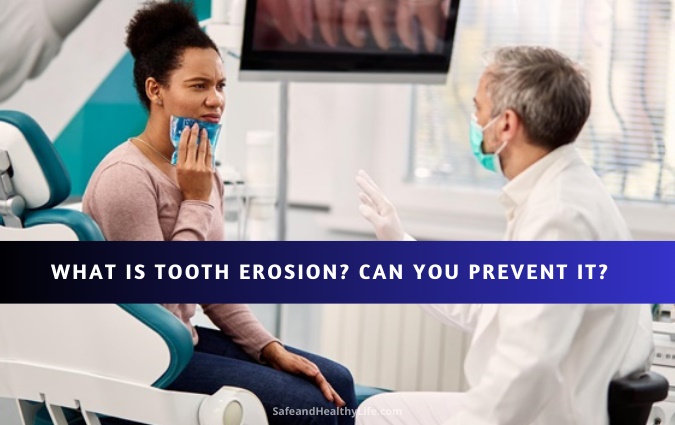
People can experience many side effects of tooth extraction.
They can vary from mild pain to swelling and bleeding as there are many different things that can affect the way your body reacts to the extraction.
Here, we will take a look at what happens if you experience swelling after tooth extraction, as well as ways to make the situation more bearable.
With only a few tricks, you will be ready to heal comfortably and with ease.
Tooth Extractions
If the damage to the tooth is too severe, the only possible option the dentist will have is tooth removal. While it is not the most pleasant procedure in the world, it will help contain the problem and work towards improving oral health.
Now, the main problem occurs when some form of oral surgery is required. Since deciduous teeth are smaller and their roots are not as deep in the jaw, removing the tooth is quite simple.
They often fall out on their own, too. But with permanent teeth, the extraction site will be so much bigger, and the patient might experience bleeding, pain, and even swelling.
These types of complications are expected. And it is nothing to worry about, as long as they are within limits. So, let’s take a closer look at what you might experience from this procedure.
Is Swelling Normal?
Swelling after a tooth extraction is quite normal. And there are several different reasons why swelling might appear.
One of the reasons why the area around the tooth can swell is due to bacterial infection. It is caused by a tooth abscess, and it can lead to fever and other problems.
Wisdom teeth can also get irritated, causing the entire area to swell. But our focus here is on swelling after the extraction.
First of all, it is perfectly fine to notice swelling after the surgery. Your face, cheek, and the entire side of the face can swell, including your eyes. This is your body’s reaction to the procedure.
Now, the reason why this might seem scary for so many people is that the swelling will often appear unexpectedly a day after the procedure.
Actually, the swelling will usually be at its peak 48 to 72 hours after the surgery. In some cases, it is possible for residual swelling to last for more than seven days, but it is not as common.
Other side effects of tooth extraction can include bleeding, pain, and so on.
When to Expect It?
As we mentioned before, face swelling after tooth extraction can happen at any point after the procedure.
Typically, swelling will start appearing after 24 hours, but you can start noticing it after up to 72 hours. And this is perfectly fine. What can be problematic is if swelling continues for longer.
The same thing applies to other symptoms like bleeding. Bleeding after three days is not normal, and you should address the problem if you notice it.
Actually, bleeding should be minimized in the first 24 hours, and anything beyond that can be a sign of a deeper problem.
Of course, swelling levels will depend on the teeth you’ve extracted. If the procedure is simple, you might not experience it at all.
On the other hand, extracting wisdom teeth can be quite challenging, and the more teeth you extract at the same time, the more swelling you will notice.
What to Do?

Photo Credit: Pixabay
The next thing we should cover is your treatment options.
What to do if you notice tooth extraction swelling after 3 days?
How to reduce swelling after tooth extraction?
These are the most common questions people ask, so let’s start from the beginning.
The first thing we should mention is that you need to act on time. Using something like ice packs will help reduce the swelling, but it is not a permanent solution. You can minimize the swelling during the first day after the extraction.
The ice pack should stay on for around thirty minutes, after which you should take a break. So, if you plan on using the ice pack method, use it for thirty minutes, followed by a thirty-minute pause.
The next day, it is more effective to apply heat instead. Since the swelling will be at its peak around two or three days after the surgery, you can use anything warm to feel better.
One of the methods you can try is using a piece of cloth like a towel, dripping it in hot water, and leaving it on your face.
Furthermore, adding salt to it can help eliminate bacteria as well.
Of course, pain medication can be more than helpful during your healing process. Your dentist will probably tell you which medication is safe for you to use, so you will have something to help you if you feel pain.
You should also avoid using straws, smoking tobacco, and focus on eating soft food only until your wound heals. The last thing you need is to dislocate the blood clot, forcing the entire process to start anew.
When to Talk to Your Dentist?
Again, face, cheek, and lip swelling after tooth extraction are perfectly fine. But you need to ensure that your wound is healing properly.
If you notice anything out of the ordinary, you should call your dentist as soon as possible.
Once the local anesthesia starts wearing off, you will start noticing the hole where your tooth was, and bleeding and pain are quite common.
But if the pain becomes unbearable, or if the bleeding doesn’t stop, contacting your dentist will be the smartest thing to do. So, don’t wait for it to worsen. Any sign of a problem should be addressed as soon as you notice it.
Once the swelling starts reducing and your wound heals, you’ll be able to return to your regular diet and daily routine.
About The Author:
Gilbert D. Curtis, DDS, is an associate professor at the University of Connecticut School of Dental Medicine. He teaches both in the undergraduate Doctor of Dental Medicine curriculum and the Advanced Education General Dentistry Residency.




